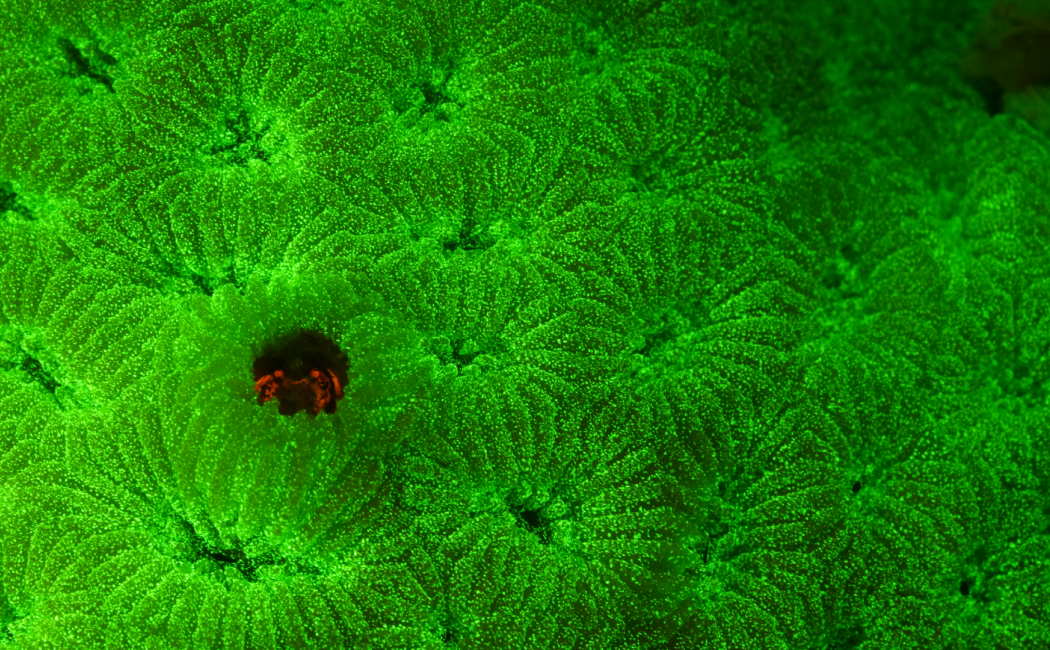
Tiny crabs glow to stay hidden
03 June, 2025
Symbiotic crabs use fluorescence to camouflage themselves in coral reefs.
Gall crabs are tiny and yet these crustaceans have evolved fluorescence to help them be concealed within hideouts they have created in the coral itself[1].
“These crabs are everywhere,” says Susanne Bähr, who led the study. “People ask how they can see them, and I say, ‘Take a mask and a snorkel and go anywhere you find coral, and you’ll see them.’”
Gall crabs don’t just live among the corals; they have a strong symbiotic relationship with them. Some invertebrates hide within the branches and crannies of corals, but for gall crabs, the connection goes much deeper.
“They settle on a coral as larvae, and then, somehow, they make the coral grow around them in very specific shapes. We don’t know how they do that,” says Bähr. Female crabs then stay in this den for the rest of their life, feeding on nutritious mucus and producing larvae, while the males rove about looking for females to mate with.